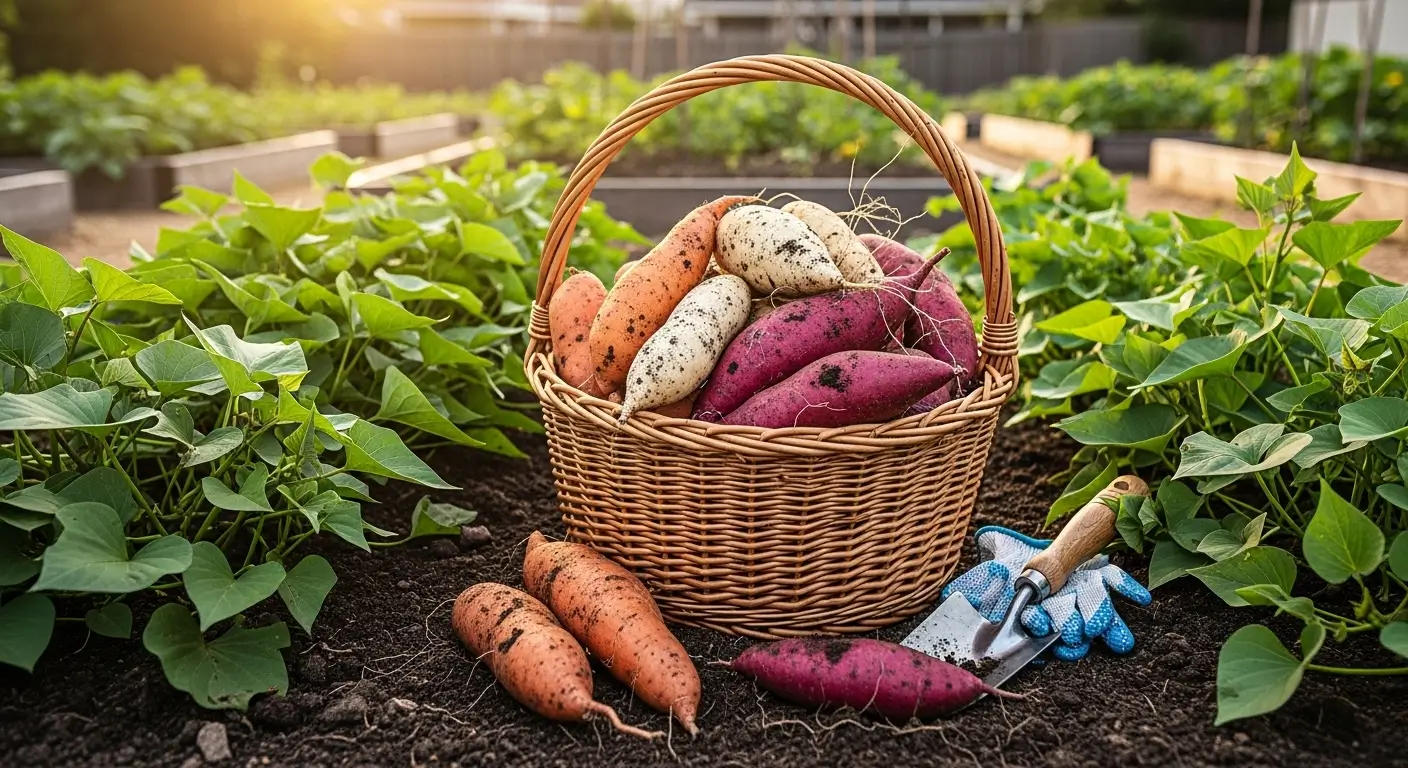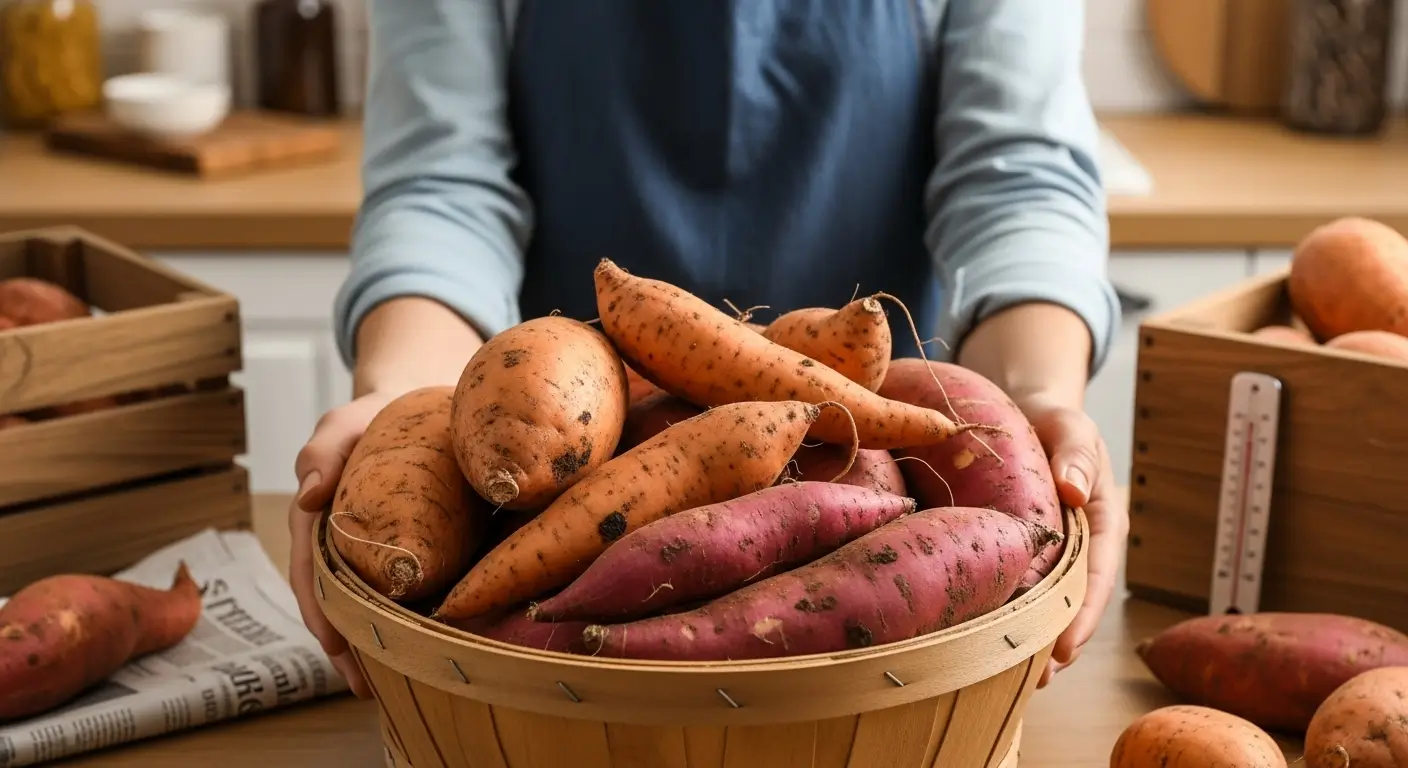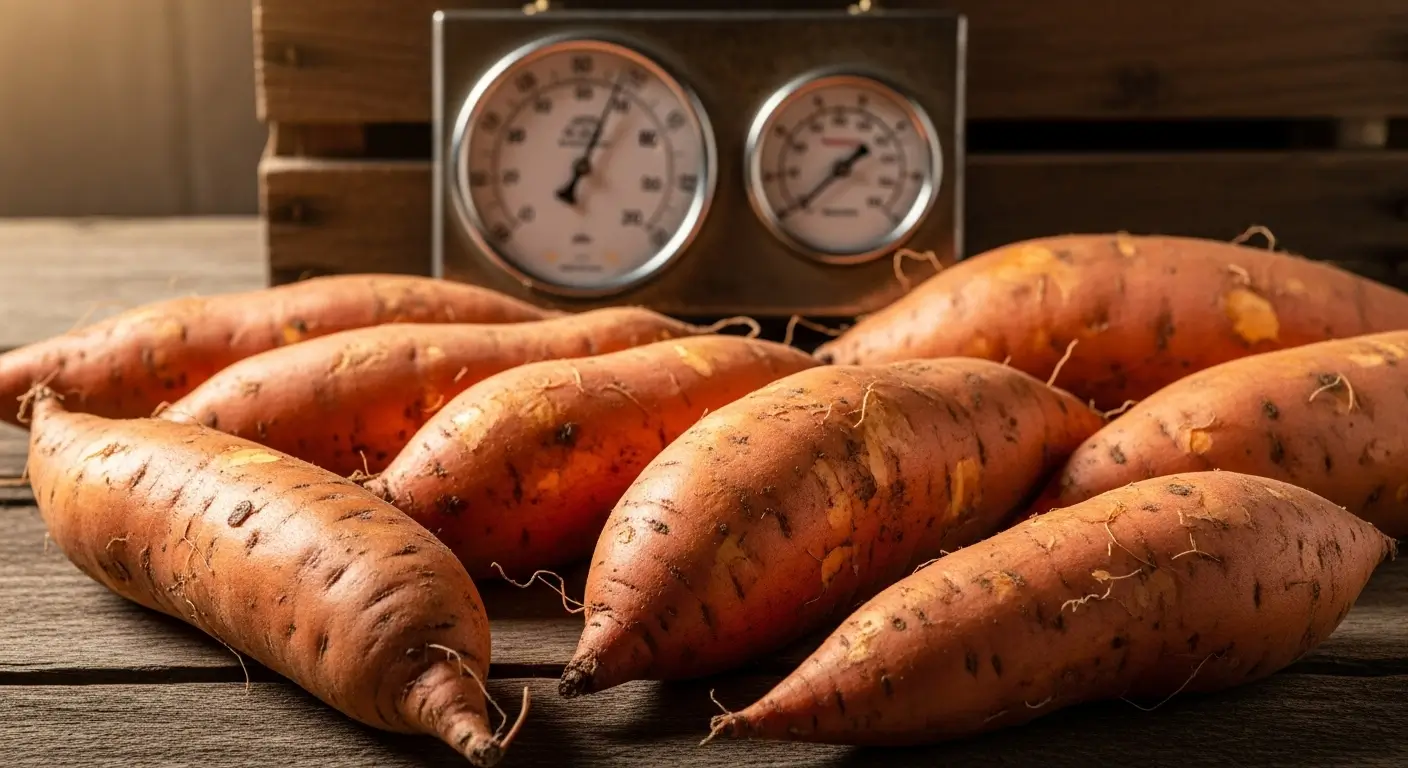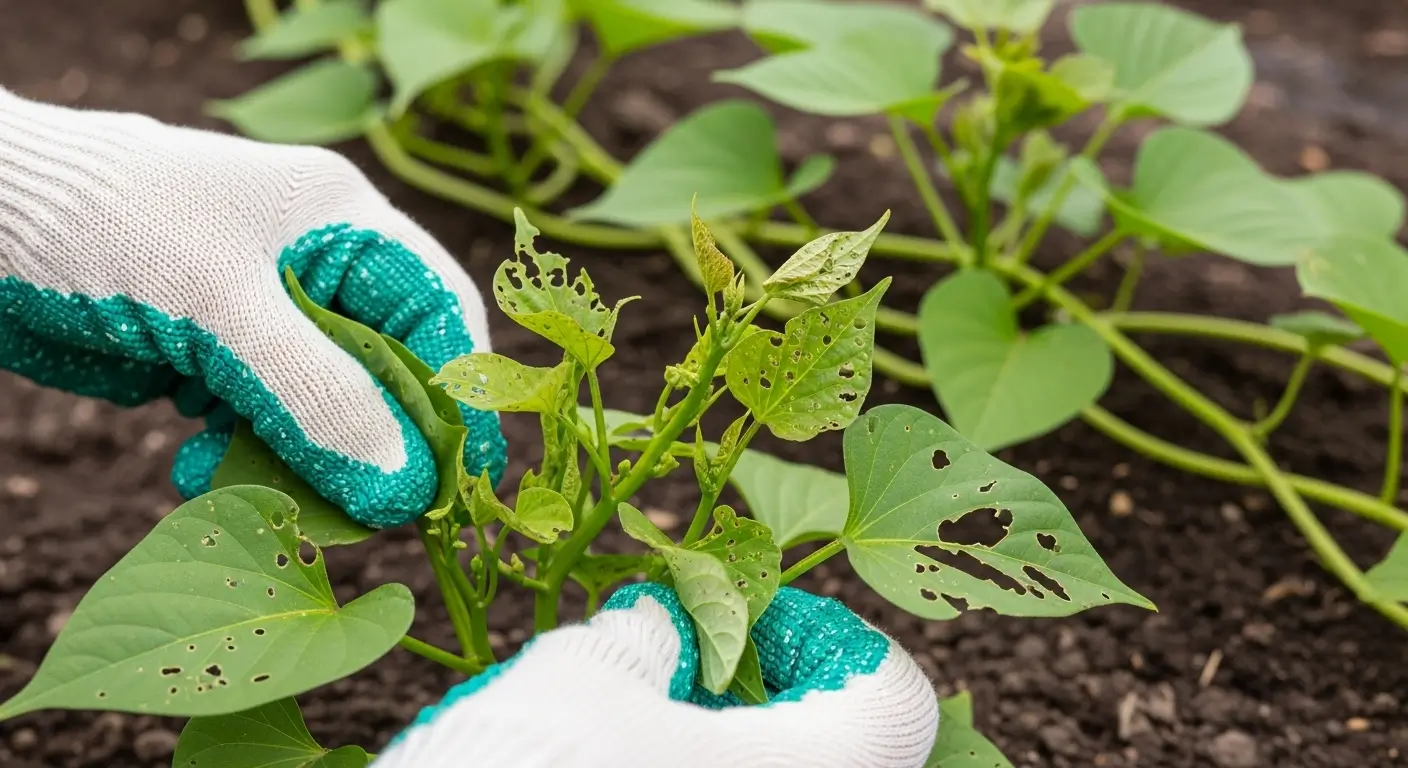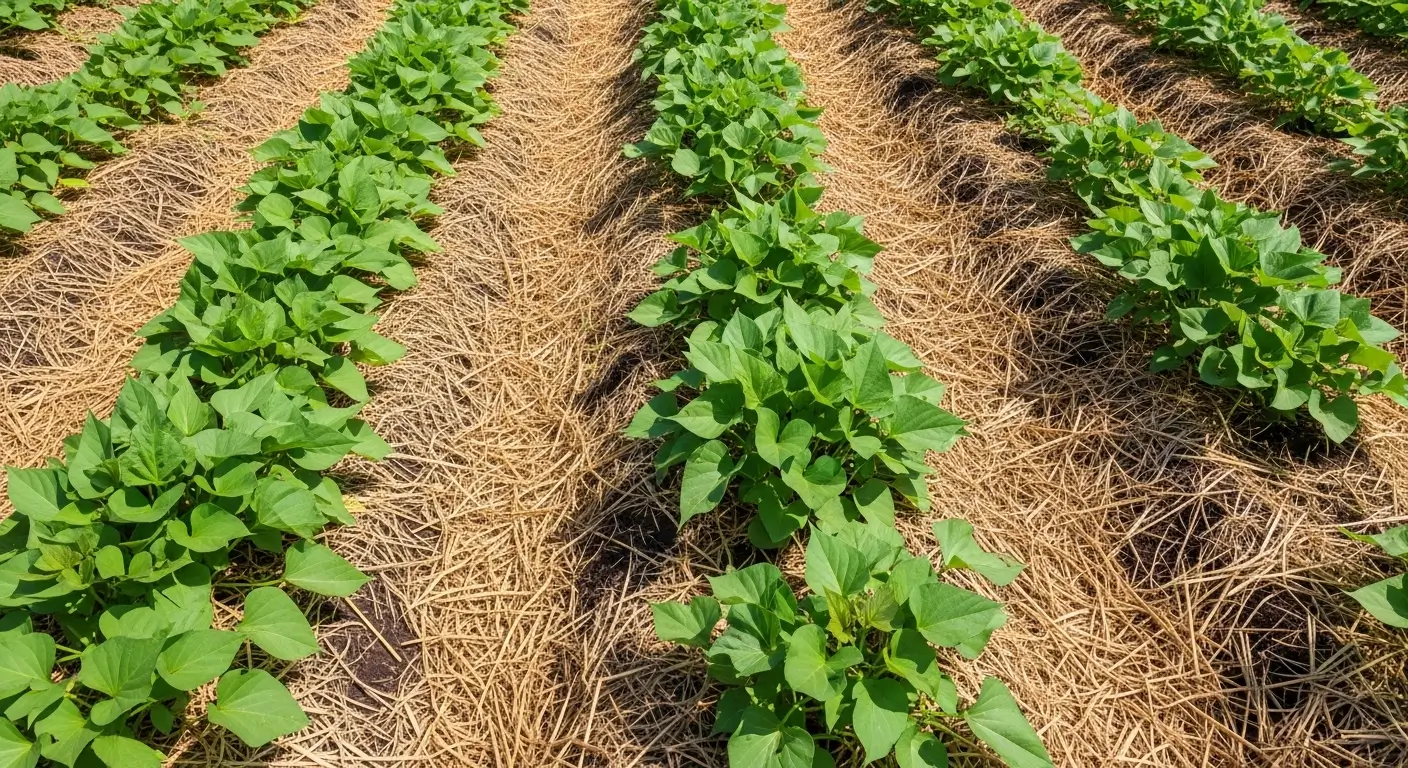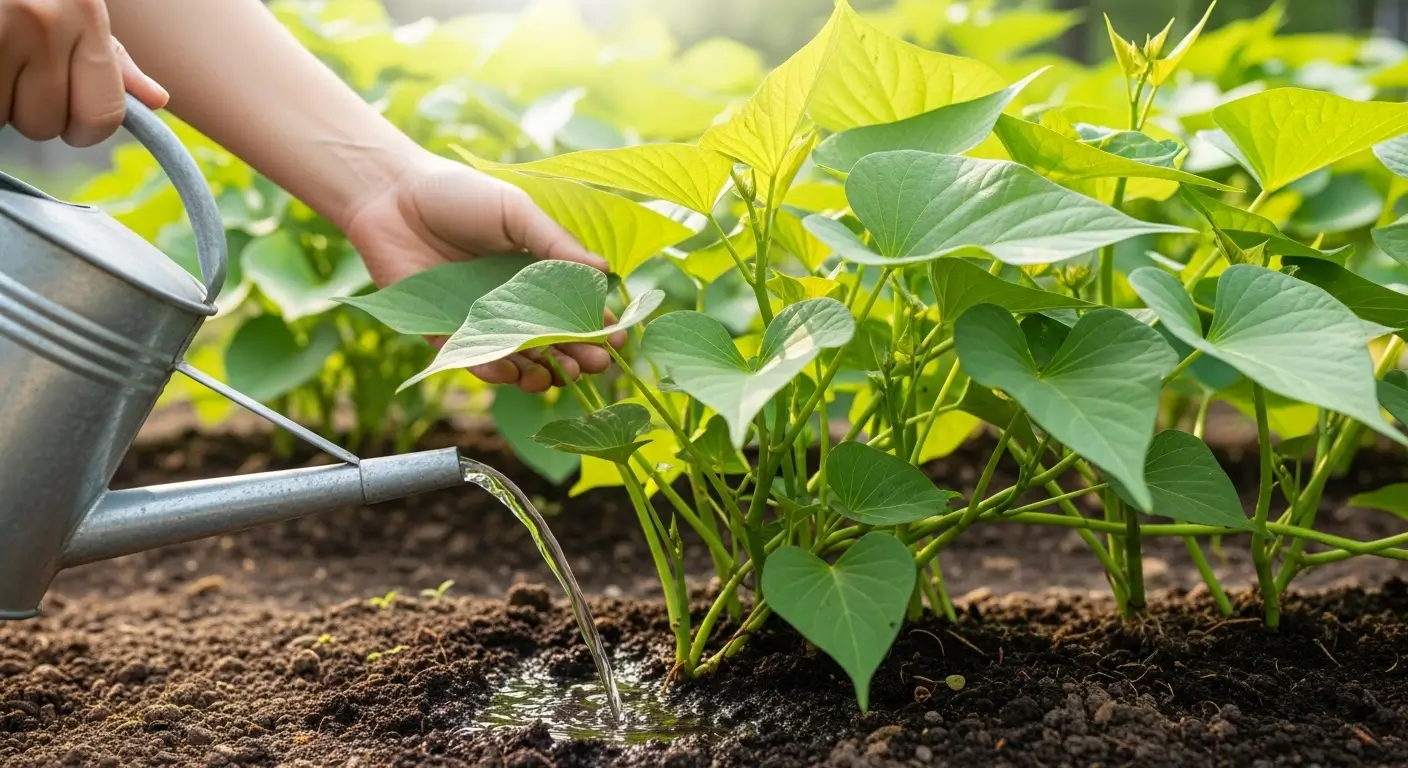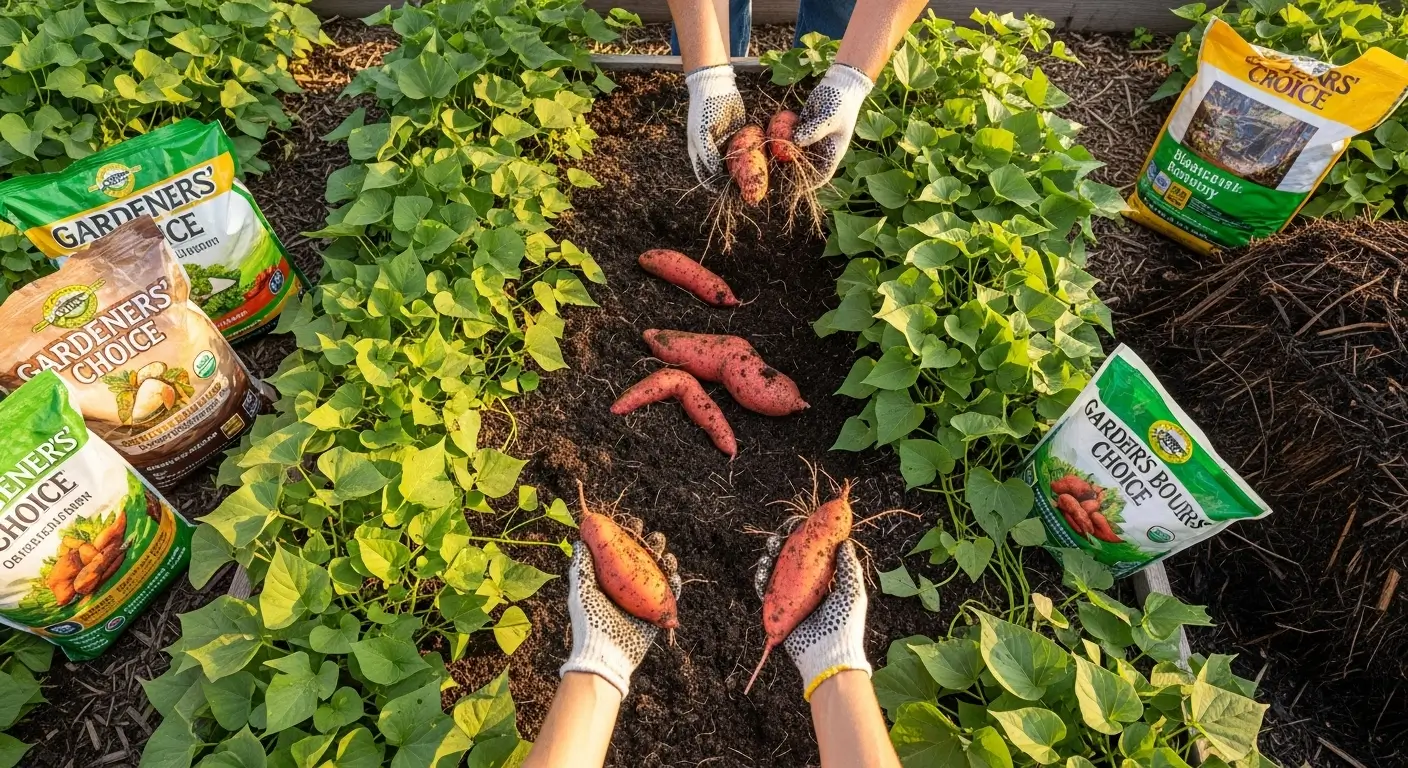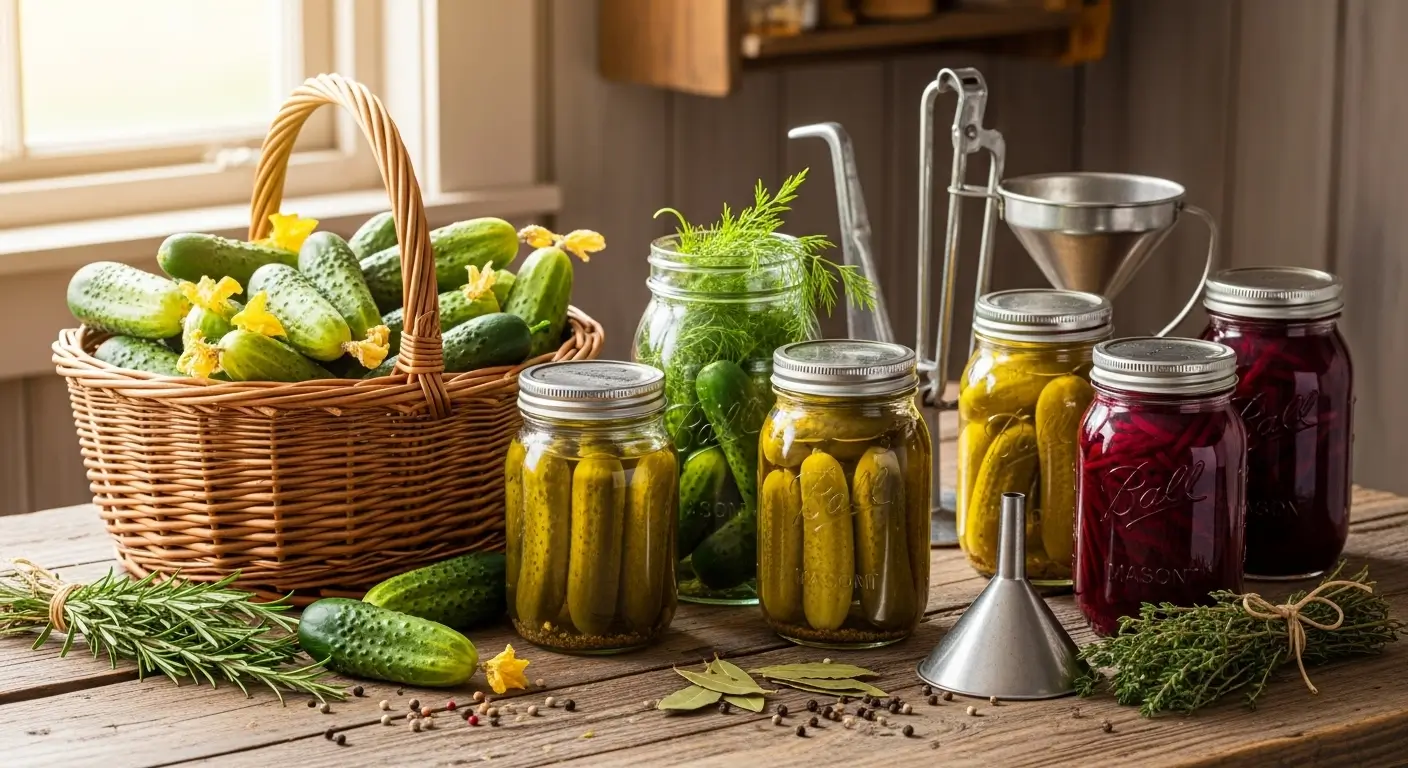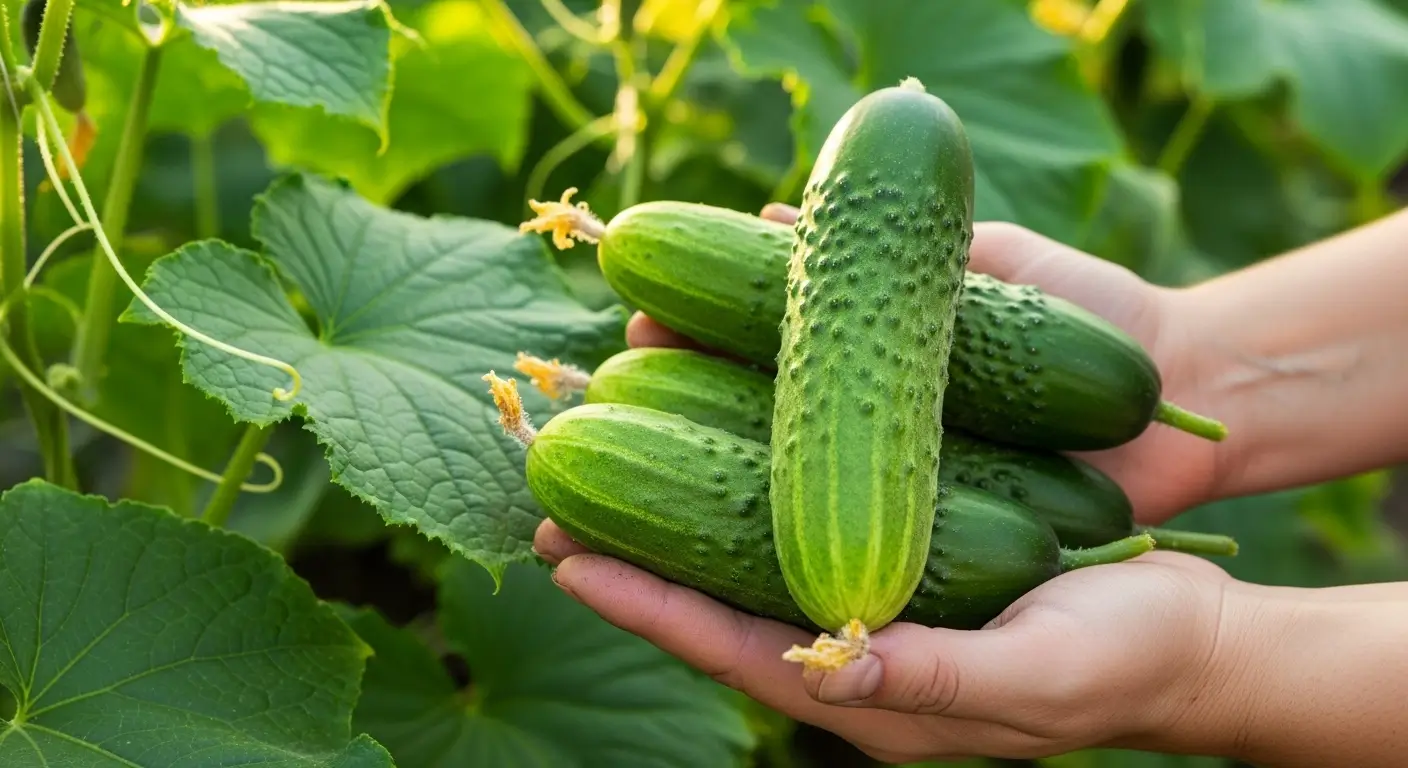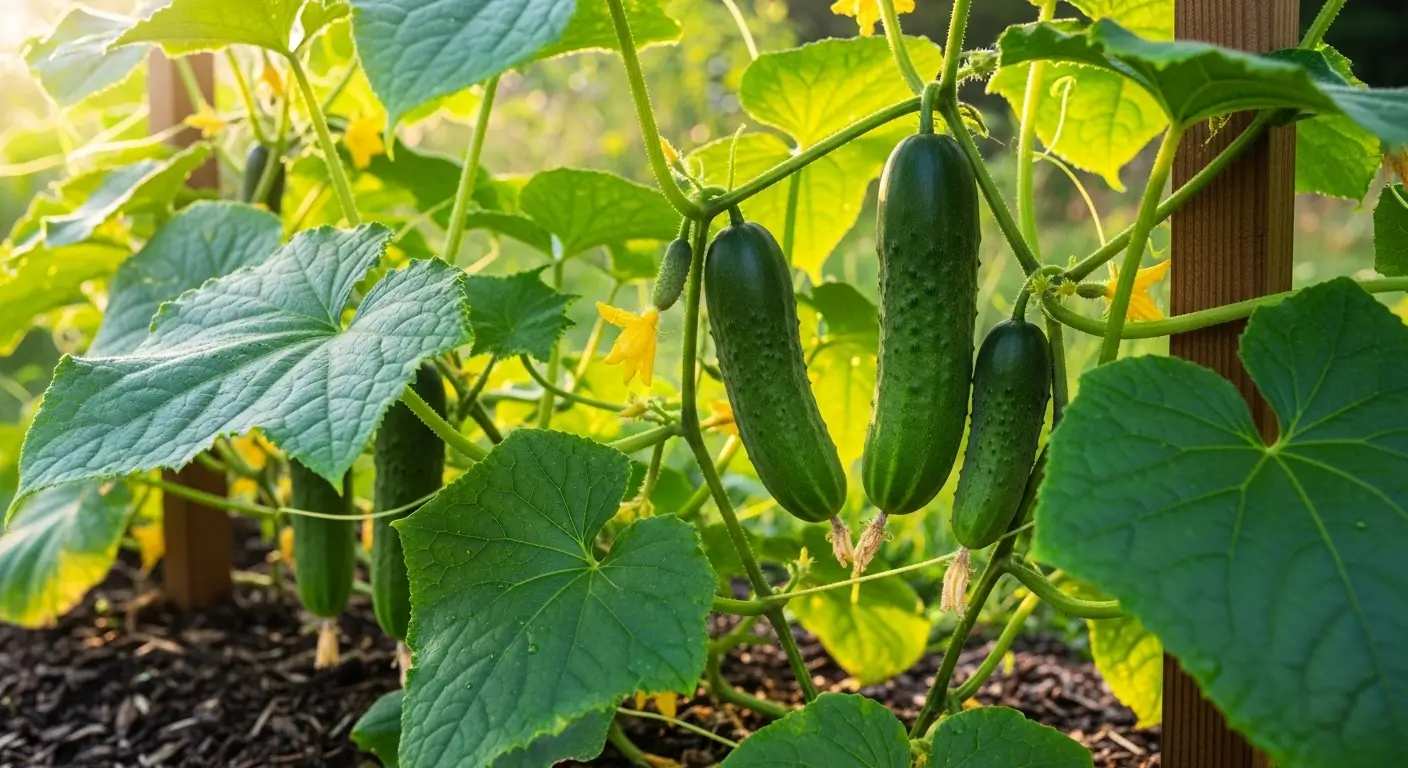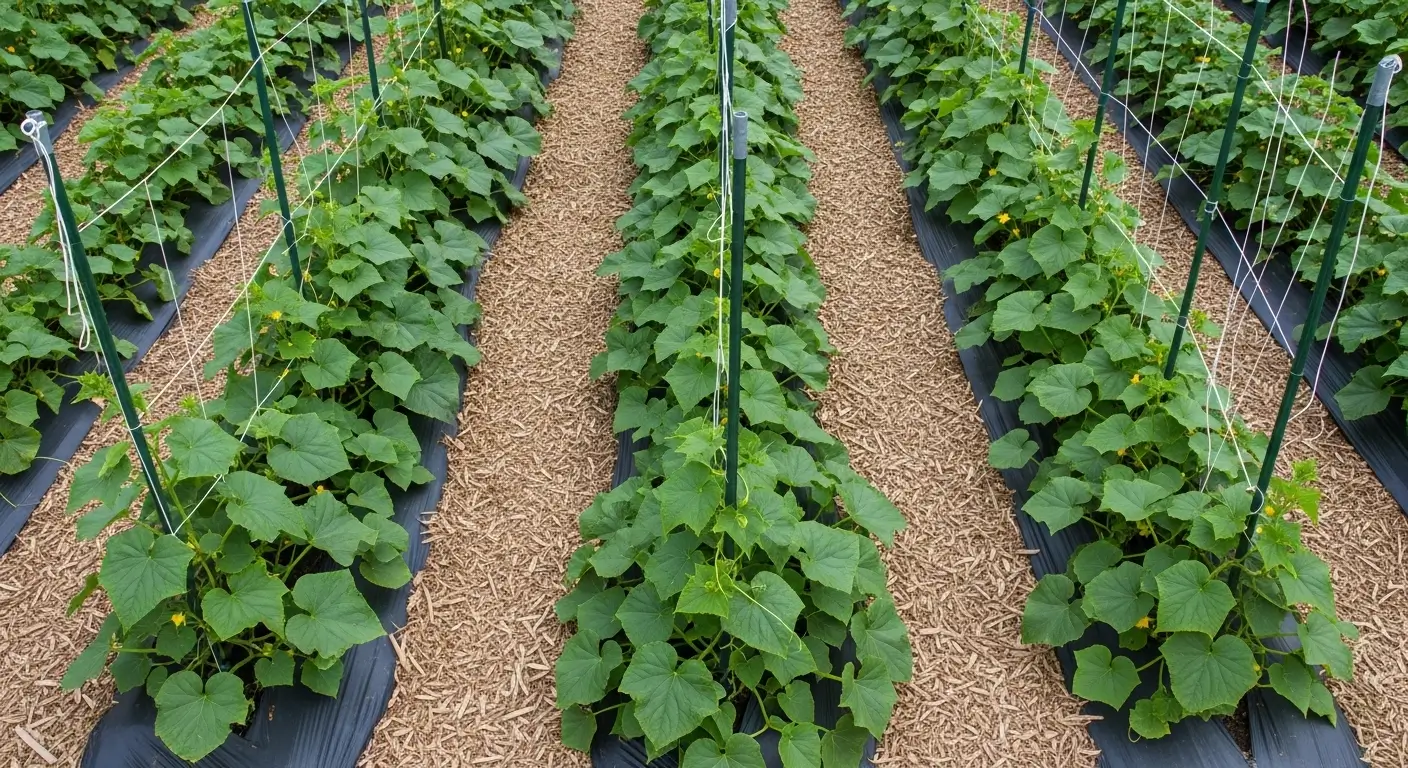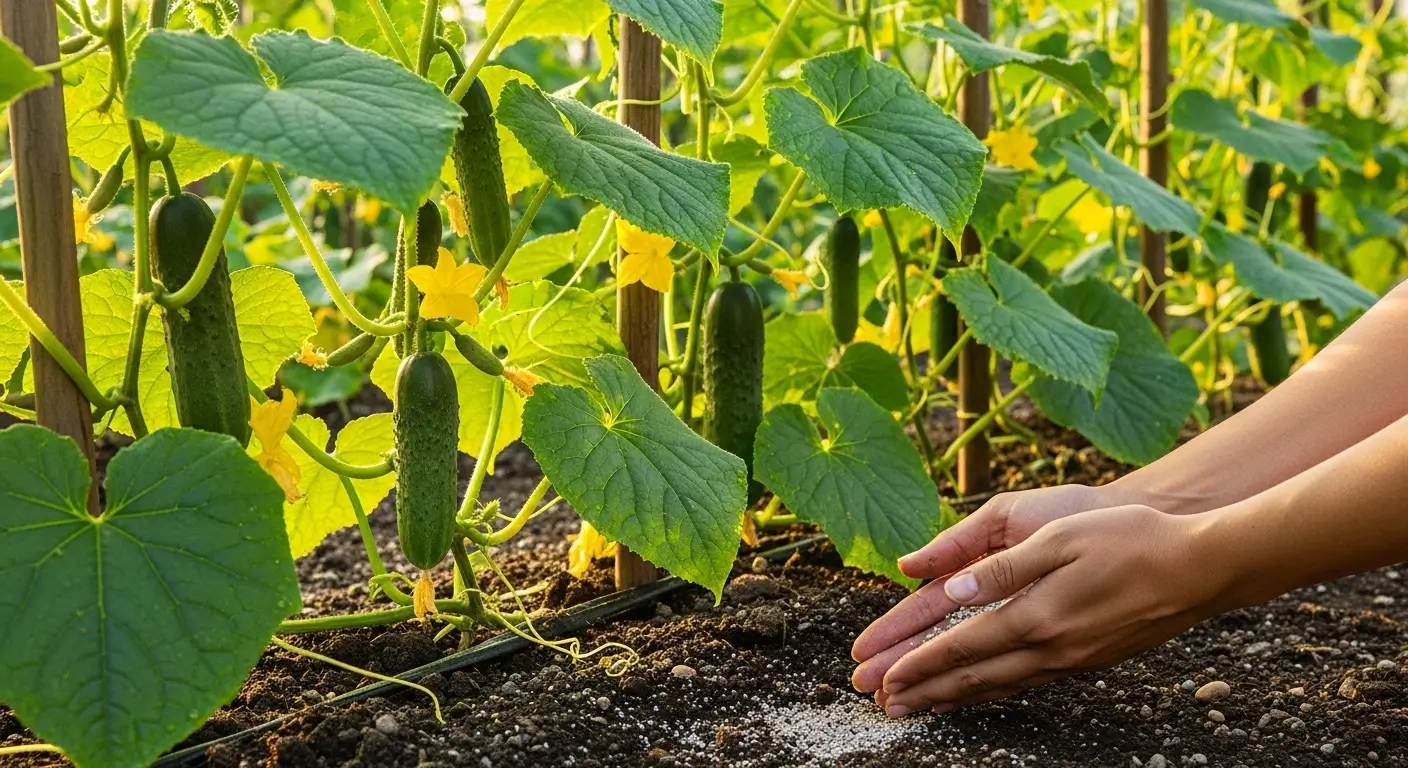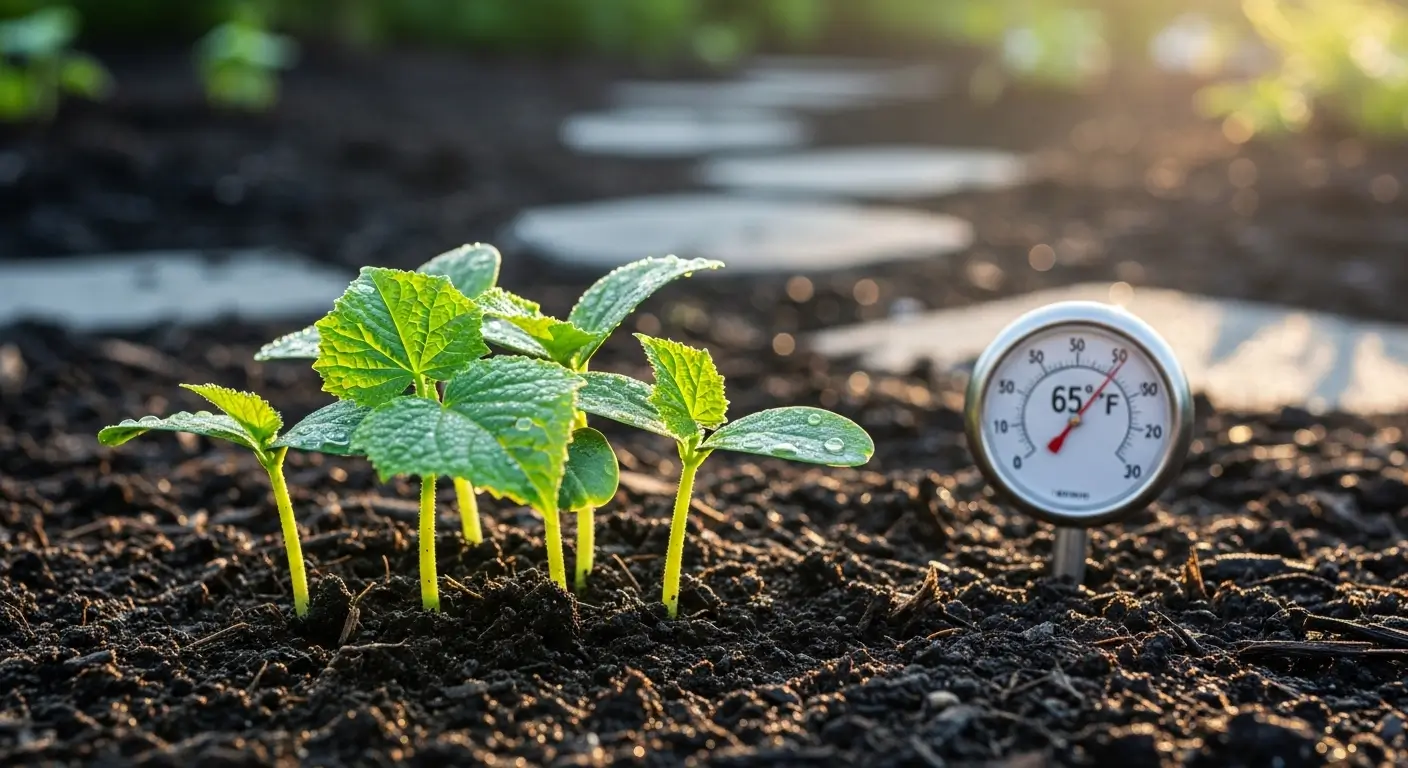Okay, so picture this: I’m wandering around my local farmer’s market like any typical Saturday, minding my own business, when BAM – I see this incredible display of sweet potatoes that looks like nature’s candy store. We’re talking deep orange ones, pale creamy ones, and some purple beauties that honestly seemed too pretty to eat (but trust me, I ate them anyway).
That moment? Total game-changer. It got me completely obsessed with figuring out all the different types of sweet potatoes you can actually grow at home. And let me tell you, after fifteen years of trial and error in my Illinois garden – including some spectacular failures that we don’t need to talk about – I’ve learned that picking the right sweet potato variety is basically the difference between garden success and “well, that was a learning experience.”
Whether you’re totally new to this whole gardening thing or you’ve been at it for years, understanding the different types of sweet potatoes will make your life so much easier. Plus, your dinner table is way more interesting. I mean, who doesn’t want to serve purple sweet potato fries and watch people’s faces light up?
So grab a cup of coffee (or tea, I don’t judge), and let’s dive into everything I’ve learned about sweet potato varieties. Trust me, by the end of this, you’ll be planning the most epic sweet potato garden ever.
Table of Contents
Key Takeaways: Choosing Your Sweet Potato Varieties
Before we get all nerdy about sweet potato varieties, here’s the Cliff’s notes version of what you really need to know:
- Orange ones like Beauregard and Centennial are basically foolproof – perfect if you don’t want any garden drama
- Purple sweet potatoes are Instagram-worthy and packed with good stuff, but they’re a bit high-maintenance
- White and yellow types are for people who think regular sweet potatoes are too sweet (yes, that’s a thing!)
- Disease-resistant varieties like Orleans will save you from plant disasters – I learned this one the hard way
- Heirloom varieties are super cool and flavorful, but might give beginners a few headaches
- Some keep way longer than others – crucial info when you’re drowning in sweet potatoes come harvest time
Find Your Perfect Sweet Potato Match
Before we dive into all the amazing varieties available, let me help you cut through the confusion with a quick quiz I created. After years of helping fellow gardeners choose their first (or next) sweet potato varieties, I’ve noticed the same questions come up again and again.
So I put together this little tool that takes into account your experience level, space, growing season, and what you’re hoping to get out of your sweet potatoes. It’ll save you from that overwhelming feeling of staring at a seed catalog wondering “which one should I pick?”
Trust me, getting the right variety for YOUR situation makes all the difference between a successful harvest and a disappointing season. Take the quiz below – it only takes 2 minutes and will point you toward varieties that’ll actually work for your garden.
🍠 Find Your Perfect Sweet Potato Variety!
Answer a few quick questions and we’ll recommend the best types of sweet potatoes for your garden
What’s your gardening experience level?
Now that you know which direction to head, let's explore all the different types of sweet potatoes so you can understand exactly why certain varieties work better for different situations…
Understanding Different Types of Sweet Potatoes
Alright, let's start with something that confused the heck out of me when I first started growing these things. Sweet potatoes come in different categories based on what color they are inside, what they look like outside, and how they grow. I know – sounds boring, but stick with me here.
Most sweet potato home garden types fall into four camps: orange, white, yellow, and purple. Each has its own personality (yeah, I'm someone who gives personalities to vegetables). Orange ones are usually the sweetest and most familiar, white ones are more subtle, almost like regular potatoes but better, and purple ones are the showoffs of the bunch.
Here's something that threw me off early on: the outside color doesn't always match the inside! I once planted what I thought would be a classic orange sweet potato based on its reddish skin, and when I cut it open – surprise! – beautiful white flesh. It was like unwrapping a present, but also slightly annoying because I'd planned my whole meal around orange sweet potatoes. Live and learn, right?
The Big Three: Most Popular Orange-Fleshed Varieties
Beauregard: The Garden Workhorse
Suppose I had to pick just one sweet potato variety to grow forever (which would be torture, but let's pretend). In that case, it'd be Beauregard hands down. This variety is like the golden retriever of sweet potatoes – reliable, friendly, and never lets you down.
I've been growing Beauregard for eight years straight, and it's literally never disappointed me. The sweet potatoes turn out exactly how you'd picture them – that perfect sweet potato shape, gorgeous orange flesh, and just the right amount of sweetness. They also keep forever in storage, which is clutch when you've got more sweet potatoes than you know what to do with.
What I love about Beauregard is that it doesn't care if your soil is perfect or if you forget to water it for a week (not that I recommend, but life happens). My neighbor has sandy soil, I've got clay that could be used for pottery, and we both grow amazing Beauregard sweet potatoes. It's also one of the faster-growing varieties, which is super important here in Zone 5b, where our growing season can be... unpredictable.
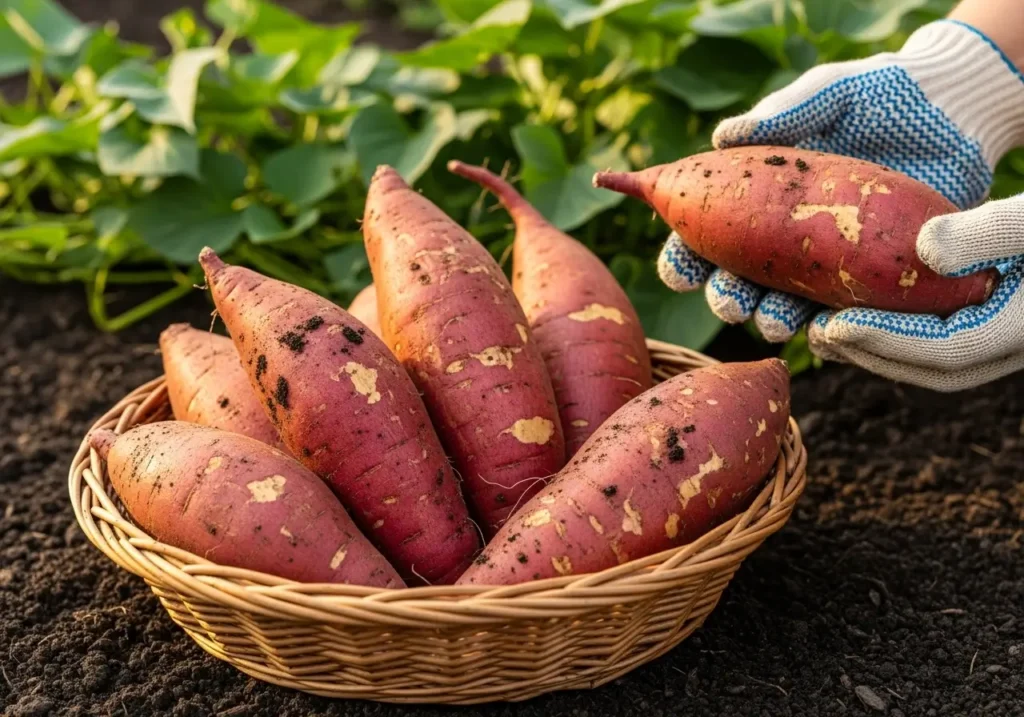
Centennial: The Flavor Champion
Centennial is the variety that made my husband realize sweet potatoes aren't just for Thanksgiving. The flavor is absolutely incredible – like if sweetness and vanilla had a baby, but in the best possible way.
These babies come out medium-sized with copper skin; this deep orange flesh is gorgeous. But here's where Centennial really shines: in the kitchen. Whether I'm roasting them, baking them, or making sweet potato fries (my kids' current obsession), they always turn out perfect.
Now, I gotta be honest – Centennial can be a bit of a diva compared to Beauregard. It wants consistent water and gets cranky when the weather goes crazy. But when you treat it right, the harvest is absolutely worth babying it a little.
Georgia Jet: The Speed Demon
Living somewhere with shorter growing seasons taught me to really appreciate the early birds, and Georgia Jet is like the overachiever of the sweet potato world. This can give you harvestable sweet potatoes in just 90 days, while most others still take their sweet time at 100-120 days.
Sure, Georgia Jet sweet potatoes are smaller than the others, but don't let that fool you. The flavor packs a serious punch, and they're actually perfect for smaller households or if you're like me and prefer not to eat massive sweet potatoes in one sitting. Plus, they're fantastic in containers, so even if you're stuck with a tiny garden or just a balcony, you can still get your sweet potato fix.
Exploring White and Yellow Varieties
O'Henry: The Mild Mannered Marvel
O'Henry was my introduction to the wonderful world of non-orange sweet potatoes, and honestly, it blew my mind. After years of only growing orange varieties, trying this white-fleshed type was like discovering a whole new vegetable.
The flesh is this beautiful creamy white with a drier texture and way less sweetness than orange types. What's impressive about O'Henry is how versatile it is – you can use it anywhere you'd typically use regular potatoes, but with this subtle sweetness that makes everything better. I love throwing them in soups and stews where orange sweet potatoes might completely take over the flavor.
The plants are total rockstars too – vigorous and productive, and the sweet potato store is just as good as the orange ones. O'Henry is my go-to recommendation for people who want to try something different without going entirely off the deep end.
Nancy Hall: A Touch of History
Nancy Hall is one of those old-school heirloom varieties that makes you feel connected to gardening history. This yellow-fleshed beauty dates back to the early 1900s, so basically, you're growing the same thing your great-grandmother might have grown.
The taste is sweet but really gentle, and the creamy texture is totally different from modern varieties. Nancy Hall's sweet potatoes tend to be longer and skinnier than what we're used to, with pale yellow skin that looks almost white. Honestly, I grow this one as much for the cool factor as for the taste. There's something incredible about growing a piece of history in your backyard.
Purple Sweet Potatoes: The Antioxidant Powerhouses
All Purple: Living Up to Its Name
All Purple sweet potatoes are exactly what they sound like – purple everything, everywhere. The first time I cut into one, I literally gasped. The color is just insane, and it stays that vibrant even after you cook it.
Beyond looking absolutely stunning, purple sweet potatoes are basically nature's superfood. They're loaded with anthocyanins – the same good stuff you find in blueberries and red wine. The flavor is earthy and nutty, less sweet than orange varieties but incredibly satisfying in its own way.
Fair warning, though: All Purple varieties are high-maintenance. They need a longer growing season than orange types, so here in Illinois, I have to start them super early and often harvest them right before frost threatens. But honestly? Totally worth the extra effort for sweet potatoes that make everyone at dinner parties go "whoa!"
Stokes Purple: The Instagram Star
Stokes Purple has basically become the celebrity of the sweet potato world, and not just because it photographs like a dream. The flavor is legitimately amazing – deep purple flesh with subtle sweetness and this dense, almost creamy texture that's unlike anything else.
What's really cool about Stokes Purple is how it behaves when you cook it. The color gets even more intense, so you end up with these dishes that are as beautiful as they are delicious. I've made purple sweet potato gnocchi, vibrant purple fries, and even purple mashed sweet potatoes that make the holidays way more interesting.
Like other purple varieties, Stokes Purple needs patience and consistent water. But if you've got the space and don't mind waiting, it's one of the most rewarding varieties you can grow.
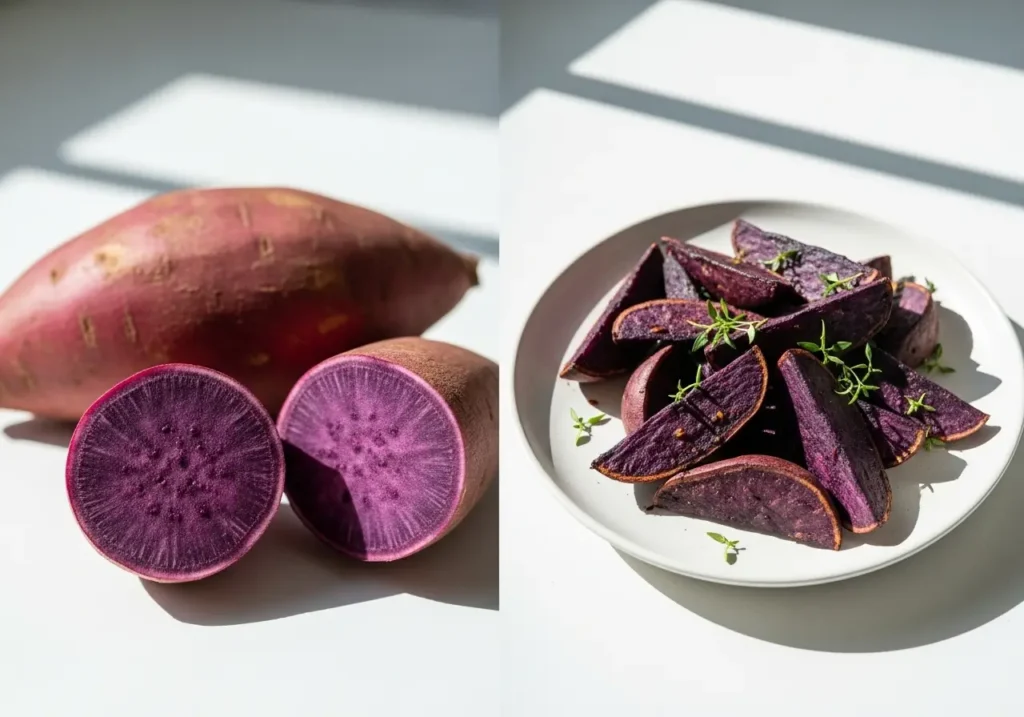
Heirloom vs Hybrid Sweet Potatoes: Making the Right Choice
Figuring out the difference between heirloom vs hybrid sweet potatoes was like having a lightbulb moment in my gardening journey. When I started, I had no clue there was even a difference. Still, now I realize this choice affects literally everything – from how disease-resistant your plants are to how excellent your sweet potatoes taste.
Heirloom varieties like Nancy Hall and Porto Rico are the old-school champions. These varieties have been passed down through generations because they're good. The downside? They might not be as tough when it comes to diseases, and they can be unpredictable.
Hybrid varieties like Beauregard and Covington are the newer kids on the block, explicitly bred for things like disease resistance and consistent yields. They're generally more reliable, especially if you're starting out. Still, they might not have some of those unique, complex flavors you find in heirlooms.
In my garden, I do both. About 70% of my sweet potato bed is reliable hybrids like Beauregard (because I like guaranteed harvests), and the other 30% is where I get to play around with crazy heirloom varieties. Best of both worlds – security and adventure!
Disease-Resistant Varieties for Challenging Conditions
Covington: The Problem Solver
Covington literally saved my sweet potato growing after I had this horrible year where black rot wiped out half my harvest. I was so frustrated, but then I discovered this variety that was specifically bred to resist common sweet potato diseases, and it's been a game-changer.
The sweet potatoes are gorgeous – rose-colored skin with bright orange flesh – and the flavor is delicious, though maybe not quite as complex as Centennial. But what makes Covington valuable is that it just keeps going when other varieties might give up. Bad weather? No problem. Questionable soil? Covington's got you covered.
Orleans: The Dependable Performer
Orleans is another disease-resistant variety that's earned a permanent spot in my garden. The plants are these vigorous, productive machines with excellent resistance to soil diseases and bugs. The sweet potatoes come out uniform and attractive, with deep orange flesh and excellent storage qualities.
What I really appreciate about Orleans is how it handles stress. Drought year? Orleans keeps producing. Too much rain? Still doing fine. It's like the steady, reliable friend you can always count on, even when everything else goes wrong.
Sweet Potato Types for Home Gardens: Space and Container Considerations
Not everyone has acres of space for traditional sweet potato hills, and that's totally fine! Some of the best sweet potato varieties for home gardens are the compact ones that don't take over your entire yard.
Vardaman: The Compact Champion
Vardaman is my number one pick for small space gardening. This variety was specifically bred to stay compact, with shorter vines that won't sprawl all over your garden and annoy your neighbors. Plus, the leaves are actually ornamental – this gorgeous burgundy color that's pretty enough to grow just for looks.
The sweet potatoes are smaller than full-size varieties but absolutely flavorful. I've successfully grown Vardaman in big containers on my patio and gotten enough sweet potatoes for several meals from just two plants. Pretty impressive for something growing in a pot!
Bush Porto Rico: Old Variety, New Possibilities
Bush Porto Rico is a cool heirloom variety with compact growth that makes it perfect for small gardens or containers. The vines stay relatively short, and the sweet potatoes develop close to the plant, making harvest easier when working in tight spaces.
The flavor is outstanding – sweet and complex with excellent texture. It's proof that you don't have to sacrifice quality when you're growing in limited space.
Storage and Culinary Considerations by Variety
Here's something I learned the hard way: different sweet potato varieties have totally different storage capabilities. This is super important when planning your harvest and figuring out how many plants of each variety to grow.
Beauregard and O'Henry are excellent keepers – they'll stay fresh for months if you cure and store them properly. Purple varieties, however, are more like "use it or lose it" situations and are best eaten within a few weeks of harvest.
For cooking, I've learned to match varieties to what I'm making. Dense, dry varieties like O'Henry are perfect for frying, while moist varieties like Centennial are excellent baked. Once you figure out these little quirks, you can plan not just what to grow, but exactly how you're going to use your harvest.
Planning Your Sweet Potato Variety Selection
When helping other gardeners plan their sweet potato adventures, I always tell them to start with the tried-and-true varieties before getting all experimental. Here's my usual recommendation:
If you're new to this: Start with Beauregard and maybe one other orange variety like Centennial or Georgia Jet. These varieties are super forgiving and will give you reliable harvests that make you feel like a gardening genius.
If you've got some experience: Add a white variety like O'Henry and try one purple type. This gives you some fun variety without making things too complicated.
If you're ready to go wild: This is where you can have serious fun with heirloom varieties, weird colors, and speciality types. Try growing 4-6 different varieties and compare everything – flavors, textures, how they grow, the whole deal.
Just remember, sweet potatoes need warm soil and a long growing season. If you're planning multiple varieties, make sure you understand the timing requirements for your area and don't forget about things like proper planting depth for the best results.
For all the nitty-gritty details about growing any of these varieties, definitely check out my complete sweet potato growing guide – it covers everything from soil prep to harvest time.
Your Sweet Potato Adventure Awaits
Choosing the right types of sweet potatoes for your garden is like putting together the perfect playlist. Each variety brings something different to the mix. Part of the fun is figuring out which ones totally vibe with your growing conditions and taste buds.
After growing dozens of varieties over the years, I can honestly say there's no such thing as the "perfect" sweet potato variety. Beauregard might be my reliable go-to, but Centennial brings those special occasion flavors, and purple varieties keep things exciting and make me feel like I'm growing something truly special.
Start with varieties that match where you're in your gardening journey and what your garden can handle, then gradually add more adventurous ones as you become more confident. Pay attention to storage requirements and how different varieties work in the kitchen. There's nothing quite like matching the perfect variety to the ideal recipe.
Most importantly, don't be scared to try weird stuff! Some of my best gardening discoveries happened because I decided to try something that seemed totally unusual or challenging. That's how I found out Nancy Hall makes the most incredible sweet potato bread, and I learned that purple sweet potatoes create holiday side dishes that people are still discussing months later.
Your sweet potato journey starts now – which varieties are speaking to you? I'm dying to hear about your plans! Please drop me a comment below and tell me which types you're thinking about trying this season, or share your stories about varieties you've already grown. I always learn something new from fellow gardeners, and your experience might be precisely what inspires someone else's next excellent harvest!
